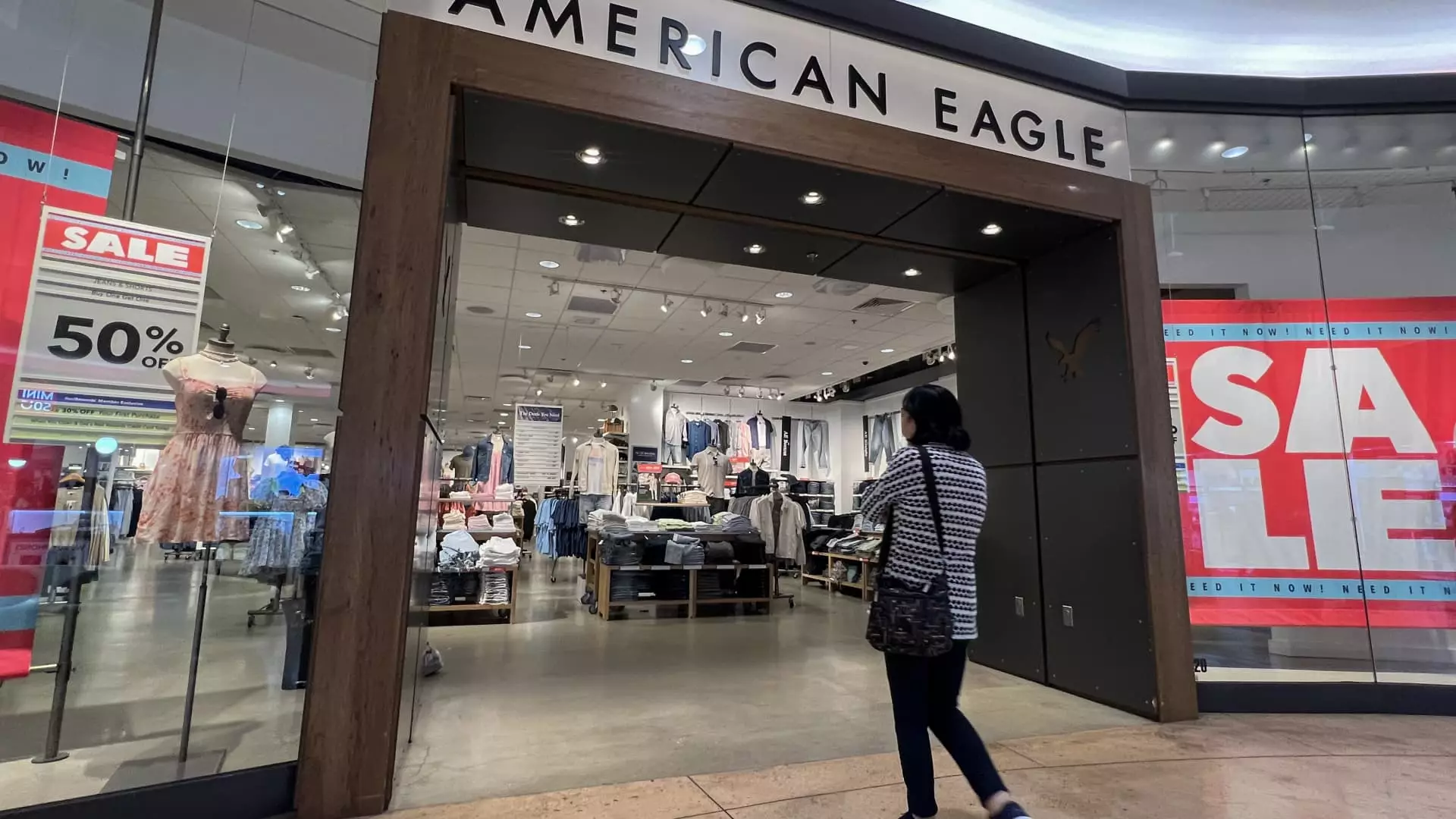In a staggering admission of mismanagement, American Eagle Outfitters has announced a painful $75 million write-off related to unsold spring and summer merchandise. This move, coupled with a retraction of their full-year guidance, paints a dire picture for the retailer amidst a backdrop of slow sales and crippling discounts. With first-quarter revenue projections hovering around $1.1 billion—representing a 5% decline from the previous year—it’s evident that American Eagle is struggling to connect with consumers at a time when competition and economic uncertainty are peaking. The expected 3% dip in comparable sales isn’t just a minor setback; it’s a red flag signaling deeper issues within the company’s strategic approach.
Discounting: A Desperate Measure
American Eagle’s decision to resort to steep discounting is a reflection of reactive, rather than proactive, management techniques. The brand’s intimates line, Aerie, is projected to experience a particularly troubling 4% slump in sales, an alarming statistic that highlights fundamental flaws in their product offerings and market strategy. The grim reality is that relying on discounts to spur sales creates a vicious cycle—consumers begin to expect markdowns, undermining brand value and loyalty. This ongoing battle against inventory pile-ups leads to more profound losses, with American Eagle forecasting an operating loss of around $85 million. It raises the question: Has the leadership underestimated the importance of aligning product with consumer demand?
Wavering Trust in Leadership
CEO Jay Schottenstein’s public acknowledgment of the company’s shortcomings encapsulates a sense of urgency that, while commendable, may be too late to recalibrate investor confidence. His candid remarks on “disappointing” execution underscore a troubling disconnect between management intentions and market realities. The responsibility lies squarely on the shoulders of leadership to not just react to trends, but to anticipate and shape them. Unfortunately, it seems as though American Eagle is scrambling to catch up in a fast-paced retail environment where agility is key.
Market Dynamics and Tariff Policies
Even with the evident challenges faced by American Eagle, there remains a notable question regarding external influences, like recent tariff policy changes. Were these shifts in trade policy a significant contributing factor to their sales decline, or are they merely an excuse for internal failings? The reality is that macroeconomic conditions often intertwine with corporate strategy. A brand that lacks a compelling vision will flounder irrespective of external upheaval. American Eagle must not only reassess their product strategies and inventory management but should also consider how external forces can be strategically integrated into their planning.
Looking Forward: Humility and Adaptation Required
As the retailer ventures into the second quarter, the emphasis should not just be on remedying the immediate crisis but also on instilling a culture of humility and adaptability within the organization. Effective change requires acknowledging failure and understanding its roots. With reports indicating a revised inventory situation, hope glimmers for American Eagle, yet the company must move beyond mere adjustments. Fostering a forward-thinking mentality where innovation meets customer desires is essential for regaining traction in a highly competitive landscape. The road ahead is fraught with challenges, but therein lies the opportunity for a revitalized American Eagle to redefine its identity in retail.

